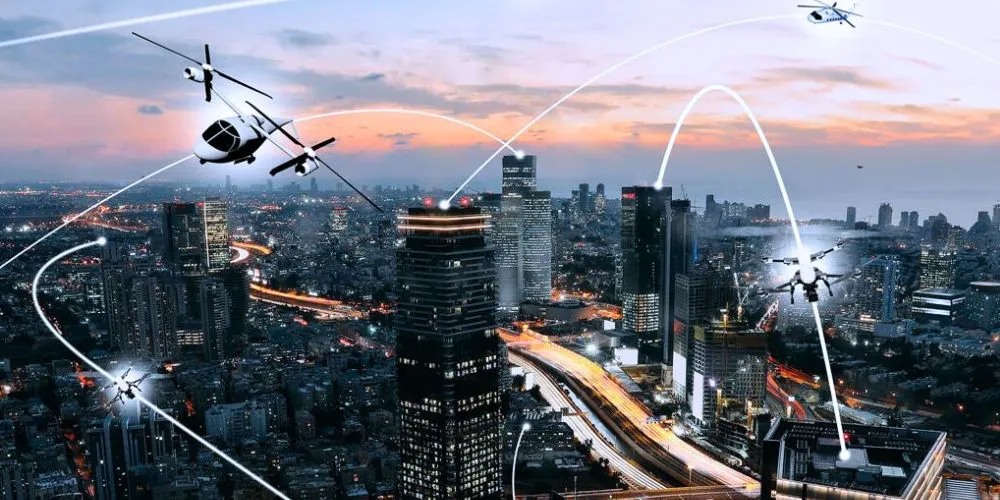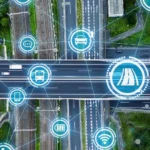Air taxis, once a vision of science fiction, are now on the cusp of revolutionizing urban transportation. These compact, electrically powered aircraft are designed to provide a swift and convenient mode of travel for short to medium-distance urban journeys. In this comprehensive article, we will explore the world of air taxis, delving into their fundamental principles and technology, discussing their potential to ease urban congestion and reduce travel time, and highlighting the challenges and opportunities they present for the future of urban mobility.
What Are Air Taxis?
Air taxis, also known as electric vertical takeoff and landing (eVTOL) aircraft, are innovative vehicles designed for on-demand aerial transportation. They are typically electrically powered and have multiple rotors or propellers that enable vertical takeoff and landing (VTOL), making them well-suited for urban environments. Air taxis aim to provide a more efficient and time-saving alternative to ground transportation for short, point-to-point trips within cities.
How Do Air Taxis Work?
Air taxis operate on the principle of vertical takeoff and landing (VTOL), which eliminates the need for runways or traditional airports. Electric motors power them and rely on advanced flight control systems to navigate. Passengers can request rides through smartphone apps, like popular ride-sharing services. Once a ride is requested, the air taxi takes off vertically from designated helipads or vertiports, follows predetermined flight paths, and lands at the destination, offering a rapid and congestion-free travel experience.
Advantages of Air Taxis
Air taxis offer numerous advantages that could revolutionize urban mobility.
Reduced Congestion
The vehicles can help alleviate traffic congestion in densely populated urban areas by taking to the skies. They offer an efficient way to bypass congested roadways, reducing travel times and improving overall urban mobility. This reduction in ground traffic can lead to less wear and tear on road infrastructure and lower carbon emissions.
Faster Travel
Air taxis have the potential to significantly reduce travel times for short—to medium-distance journeys. They can cover distances in a fraction of the time it takes for ground transportation, making them an attractive option for time-sensitive commuters. This enhanced speed is particularly beneficial for business travelers and those needing quick access to medical facilities.
Environmentally Friendly
Many air taxis are designed to be electrically powered, resulting in lower emissions compared to traditional combustion-engine vehicles. This eco-friendly approach aligns with sustainability goals and improves urban air quality. Electric taxis can be crucial in reducing greenhouse gas emissions and mitigating climate change in urban areas.
Reduced Infrastructure Demand
The aerial transportation systems do not require extensive road infrastructure or the construction of new highways. This can lead to cost savings for cities and a reduced environmental footprint. Developing vertiports and charging infrastructure is comparatively less resource-intensive than expanding road networks.
Applications of Air Taxis
Air taxis have a wide range of potential applications across various urban scenarios.
Urban Commuting
The transportation solutions are well-suited for urban commuting, providing a fast and convenient mode of travel for daily commuters. They can reduce travel times and offer a hassle-free alternative to congested roads. Commuters can bypass traffic jams, reducing stress and improving overall quality of life.
Emergency Services
Air taxis can be instrumental in emergency medical services, quickly transporting medical personnel and supplies to accident sites or remote locations. Their speed and accessibility can save lives in critical situations. The vehicles equipped for emergency medical services can act as flying ambulances, rapidly responding to emergencies.
Urban Airports
Aerial transportation systems can connect urban areas with airports, reducing the time and congestion associated with ground transportation. This can be particularly beneficial for business travelers and tourists, enhancing the overall travel experience. The vehicles can boost tourism and economic activity by connecting airports with urban centers.
Disaster Relief
Air taxis can provide rapid transportation for relief efforts in natural disasters or emergencies, helping affected communities receive assistance more quickly. Their ability to access remote or disaster-stricken areas can significantly impact disaster response and recovery efforts.
Challenges and Future Directions
While air taxis hold immense promise, they also face challenges that require attention for their widespread adoption and integration into urban transportation systems.
Infrastructure Development
Establishing the necessary vertiports and air traffic management systems is essential for air taxis’ safe and efficient operation. Investment in infrastructure development is required to support the growth of this emerging industry. Vertiports should be strategically located to ensure accessibility and convenience for passengers.
Regulatory Framework
Developing comprehensive and standardized regulations for air taxis is crucial to ensure safety, air traffic management, and integration into existing aviation systems. Regulatory bodies and industry stakeholders must collaborate to establish clear guidelines. Regulation should address safety standards, flight paths, noise levels, and passenger protection.
Noise Pollution
The noise generated by air taxis can be a concern for urban residents. Advancements in quieter propulsion systems and flight routes are needed to mitigate noise pollution. Noise-reducing technologies, such as quieter rotors and sound insulation, should be prioritized to minimize community disturbances.
Safety
Ensuring the safety of passengers and the public is paramount. Robust safety measures, including redundant systems and rigorous testing, are essential to gain public trust in air taxi services. Safety should be a top priority in air taxis’ design, production, and operation. Pilots and operators should undergo comprehensive training to handle emergencies effectively.
Conclusion
Air taxis represent a bold leap into the future of urban transportation. By harnessing the power of electric VTOL technology, these vehicles have the potential to transform urban mobility, reducing congestion, shortening travel times, and contributing to a cleaner urban environment. While challenges such as infrastructure development and regulatory frameworks must be addressed, the promise of these vehicles as a revolutionary transportation mode is undeniable. As technology continues to advance and cities seek innovative solutions to urban congestion, air taxis are poised to become an integral part of the urban transportation landscape, offering a fast, efficient, and environmentally friendly means of getting from point A to point B in the city of the future.












